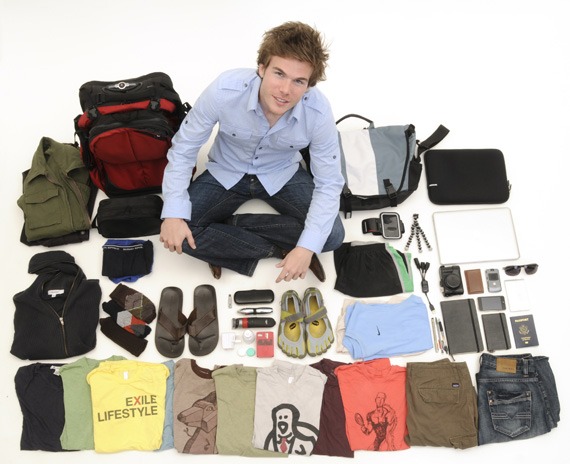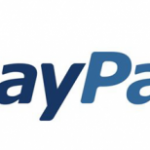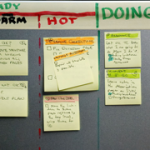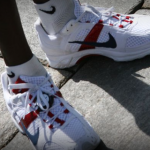
For many, it’s the dream: running a business you’re passionate about that will allow you to travel the world, check your laptop from a beach side hammock, send emails from your phone while sipping Malbec in Patagonia, and exchange flirtatious glances with locals at a cafe in Europe, luxuriating in the scent of roasted coffee beans, fresh-baked pastries, and freedom.
Freedom!
Unfortunately, creating this kind of freedom-business — one that provides financial security, location independence, and personal fulfillment — can be a bit tricky, and seem nearly-impossible looking in from the outside.
There are a lot of moving parts, and unless you have a good deal of time to work it out through trial-and-error, it’s easy to miss something important and have the whole thing come crumbling down around you like a nudged pile of croissants in a French cafe display case.
Fortunately, I’ve had some time to make those mistakes and learn from them, and I’m going to share with you the fruits of my experience traveling full-time for two years, running a handful of businesses from the road, building my ideal lifestyle and accruing the income to sustain it.
From anywhere.
Set a Goal
Before you do anything else, it’s important that you establish what your end point is going to be.
Do you want to travel full-time? Just have the option to travel when you want? Perhaps just re-locate and not have to sit in an office? Is location somewhat arbitrary, and it’s most important that you can do something more fun for a living?
Dream big here, and don’t be afraid to get specific. If your ideal work-life balance is putting in ten hours of effort on the computer and then spending the rest of your day yachting in the Caribbean, unabashedly set that as your goal. Where there’s a will, there’s a way, and these days we’ve got access to so many ways it’s unbelievable, provided you know how to access them.
This is also a vital step because it assures that you’ll be spending your time heading in the right direction. I can’t tell you how many people I’ve met on the road who found themselves in a situation they thought they would love (spending all day on a beach in Southeast Asia, for example), only to realize that they were aiming for someone else’s dream, not their own (they prefer cold climates and hamburgers, not humidity, heat, and pad thai).
This goal may change along the way, but spending some time to make sure you’re walking in generally the right direction is time well spent.
Itemize Your Personal Assets
The next step is to step back and coldly take stock of your personal assets and list them out the same way you would itemize a closet full of possessions.
When I say personal assets, I mean everything from the money you have in your bank account to your passing knowledge of how to play the banjo. An asset is anything of value, and in this context, it’s anything of value that can conceivably bring you more value in the future. That money in the bank is earning you interest over time, and your above-average rendition of ‘Stairway to Heaven’ played on the ol’ five string could lead to your giving lessons as you travel, or writing a niche-dominating blog on banjo maintenance.
It’s important that you approach this step the same way that you would approach assessing the value of a car or house before committing to a down-payment. If the window is broken, take that into account, and if you really aren’t very good at web design, don’t add that to your list of personal assets.
On the other hand, if you come across something that you could easily improve upon that might have some value, spend the time or money necessary to acquire that upgrade. Web design courses can be had cheap or free online, and spending a handful of hours fleshing out that skill set could be very valuable down the line, increasing your personal value potential out of proportion with the time you invested in it (just as fixing a stuck window could increase a car’s value more than it costs to have the issue taken care of).
Build a Personal Business Plan
Once you have a list of personal assets, it’s time to figure out how you can utilize them to produce value other people will want to pay you for.
The way I like to approach this is to look at yourself and your life as a business, and build a business plan the same way you would for any new venture, though one that potentially has multiple revenue streams and straddles multiple fields.
I think the best way to explain this clearly is to give you an example of what my personal business plan looks like.
Taking stock of my assets a few years ago, I decided that my strongest value-producing skills revolved around branding, especially design, brand strategy and web development. I also had a background in writing (having worked as a columnist in the past), and I assumed I would be able to use that skill for something income-generating. My history of entrepreneurship (and all that entails) also seemed like it would be valuable in some way, so I figured that into the equation.
I had many other things on the list, as well, including playing guitar, professional photography and being an above-average yo-yoist, but I decided that these skills would be a lot tougher to turn into value that other people would pay for, so I put them on the back-burner. Also, I’m a lot more passionate about branding, design, and writing, while playing guitar is something I do for fun.
Eventually, I worked out a plan where I would be able to do brand consultation for clients from anywhere in the world, which was important, because the ideal lifestyle I identified included full-time travel. I would also provide design and web development services to some clients, but I would keep that to a minimum, and use those skills, along with my entrepreneurial chops, to build small businesses for myself around any niche I saw being underserved as I traveled.
It was only a few months before I had an online community, a t-shirt shop, a publishing platform and few ebooks bringing in revenue, each receiving an early burst of traffic from a blog I set up as a hub for my activities and to keep track of what I learned along the way.
Finally, when I decided I wanted to start traveling full-time, I was making a lot of money running a branding studio in LA, but I was also spending a whole lot on the overhead created by my lifestyle. Part of creating a personal business plan involves identifying liabilities (the opposite of assets), and my liabilities were mostly tied up in that lifestyle, so I determined that a good part of that lifestyle had to go if I wanted to achieve my new one. I got rid of my townhouse and high-end wardrobe, my five computers and my car, my hundreds of books. The space and upkeep requirements of these possessions were too much of a burden for my formula to work, so I eliminated them from the equation just as an office manager would remove the excess reams of paper or boxes of paperclips that never get used from an office’s monthly equipment order form.
Things you truly care about — and that are an important part of your ideal lifestyle — are not liabilities, they’re vital aspects of what you’re working toward. Anything beyond that, though, can be cut out of the picture and make the whole process that much easier. Tough choices to be made, definitely, but being your own business isn’t always easy!
Tell a Story
An often-overlooked step in creating a successful freedom business that allows you to travel is figuring out what your story is, and then communicating it as clearly as possible.
This is a fundamental facet of branding: figure out what you’re all about, refine a message from that, and distribute that message. Doing so brings like-minded people to you (so that you don’t have to hunt them all down), and can also result in surprising opportunities.
The story I’ve been telling since I started traveling full-time is that I’m a twenty-something serial-entrepreneur who moves to a new country every four months based on the votes of my readers.
Quick, simple, to the point; pretty basic concept, really. And that’s the response you want people to have, you want them to understand what you’re all about immediately, and then to ask questions to learn the details (“Why four months? What do you do there? What kind of businesses?”). This gives you the opportunity to tell them more about what you’re up to without force-feeding your story to people who aren’t interested (Seth Godin coined a great term for this approach: Permission Marketing).
Your story needn’t be gimmicky, and could be as simple as “I’ve worked as a garbage man in Nantucket my whole life, and I decided that I want to live in Boston and travel three months out of each year, so I started a custom three-piece suit business.” Super-simple, but something that will get people asking questions and doing what they can to help you achieve your dream; when you have a story to tell, people will want to be a part of that story, and will generally do what they can to help you reach your happily-ever-after.
Construct Platforms
The best way to tell your story to a larger audience and rally up support for what you’re doing is to build platforms from which to present it.
These days, building a platform is easy. You can build a website or even just head over to Facebook, create a profile, and boom, platform built. Time for a beer.
But wait. Before you crack open a cold one, note that although building a platform is easy, optimizing it can take a little work. Having a Facebook profile that is an incoherent jumble of messages is like having a billboard covered in random letters: it’s neat that you have one, but it’s not really doing anyone much good.
You want your platforms to express your story as clearly as you can express it verbally, and even more so, if possible. You’ll have to do this through the copy that you write for the different sections, the people, products and movements you align yourself with, and the media you post on your site or profile.
So if your story is that you’re a former teacher who is now selling pre-built art history courses to home-schooling parents while living in Rome, your profile should reflect this. Post stories to your wall about Rome, art, architecture, history, education and the like. Your photo album should be bursting with shots you’ve taken of your new home, and there should be links to where people can acquire your courses, testimonials of happy customers, and maybe a sign up form for your mailing list.
This doesn’t mean you can’t be yourself on your platforms — in fact, you absolutely should, or it’s not likely to be a very enjoyable experience — but if the first thing someone sees when they go to your site is a photo of a squirrel kissing a plastic dinosaur, or random quotes from random people about random things, then you’re not likely to grab the attention of a potential customer or co-conspirator quickly enough. They’ll move right along, assuming you’re just some person whose life in no way relates to their interests.
Take this to heart across all media that you utilize, including your websites, social media accounts and business cards. Own that story, and tell it in as many ways as you can, using what’s available to do so.
Improve Your Network
Once you have your story and platforms built, you can start to network.
Having a strong network can be just as valuable as having a massive bank account in that it gives you access to things you wouldn’t otherwise have access to, and increases the value of every asset you possess manyfold.
Your network can help you promote your ventures, give you feedback and help you refine your message, connect you with other people that might be able to help you get where you want to go, and help you more effectively utilize the skills that you have.
For example, when I started traveling, I wrote for my blog and for myself, and it wasn’t until six months or so later that people in my network started connecting me with writing gigs that I could use as another revenue stream.
The latent benefit of having a rounded-out network is that you’ll be able to connect with like-minded people, and surround yourself with inspiration and support. Having the right people cheering you on can mean the difference between folding under pressure and persevering despite great odds. It’s also a great way to be introduced to a new culture when you travel; these days I seldom arrive in a new country without already having a few invites and introductions through my network, which saves me the time I would otherwise spend ambling about, making silly mistakes and spending too much money in tourist traps.
Figure Out Your Income
A mistake I see aspiring freedom business owners making is to assume that they’ll scrap their current lifestyle, start traveling and figure out the whole money thing along the way. Surely someone will pay them for leading an interesting life, right?
Unfortunately, I generally meet these people as they’re on their way home after several months of amazing travel that has left them broke and looking for a new job back where they came from. Don’t get me wrong, it’s possible that you could make this work, but it’s just not terribly likely, and it’s a much better idea to be prepared financially than to try to deal with all the lifestyle changes AND financial instability at the same time.
Identify what kind of lifestyle you want to achieve, figure out your personal assets and business plan, and make sure you’ve got some income coming in (even if it’s just a trickle) before you hit the road. Trust me, you’ll be happy you did later.
Pave a Revenue Path
One tricky aspect of traveling and running businesses from the road is your revenue path; that is, how do you receive money? And where does it go once you receive it?
And how will you pay your dog-sitter from another country?
These are things that most people don’t have to worry about overmuch, because in a normal, non-travel-heavy life situation, you work, your paycheck goes into a bank account and then you spend that money. On the road, however, it can be tricky to even get paid, much less make sure that money goes where it should and is accessible when you need it.
You’ll need to take some time to figure out how to deal with several different eventualities before you’ll truly be ready for anything. Here’s what my revenue path looks like:
Anything I can do online, I do. Most of my businesses allow me to receive my profits through Paypal, Google Checkout or Amazon Payments, and once the money is in one of those account, I can pay for things online, send the money to other people, or transfer it to a bank account.
I have three bank accounts, one that has a killer checking account that allows me to remove cash from any ATM in the world without having to pay fees (Charles Schwab…and ATMs always give the best exchange rate when you travel, by the way), one that has a very high interest savings account (ING), and one that has brick-and-mortar locations I can go to when I’m back in the US and need in-person help, and a decent reward-generating credit card (Bank of America). I have each of these accounts hooked up to my online accounts (Paypal, Google Checkout, Amazon Payments) and to each other, so the money I have in one location can be in another within a day or two, at most.
When a client or customer for one of my ventures insists of paying me with a check (this still happens, especially for large amounts), I have them send it to an address in the US where one of my family members signs the check and mails it to my checking account (using bank-supplied pre-paid envelopes) to be deposited a day or two later. There are services that will do this for you, too, if you don’t have a friend or family member available in the country where you do your most business to receive and deposit your checks for you.
This system is INCREDIBLY difficult to set up once you’ve left your country of origin, as there will likely be paperwork to sign and submit to connect your accounts and different banks to each other, so make sure you get the pathways all set up and smoothed over before you leave. Take some time to familiarize yourself with the process, too, because you don’t want to accidentally send your money somewhere it shouldn’t be, or somehow lose it in transit.
Cope with Legalities
No matter how convenient it might be to ignore it, the law follows us wherever we happen to travel, and these laws are not just complex and confusing, but also different in every country, state, city, and block (okay, maybe not block, but still).
Before you leave, you need to make sure that you have proper paperwork filed for any business activities you happen to be undertaking, and a good understanding of what kind of business you can take part in wherever it is you happen to be traveling to.
In most cases, you can do online work from anywhere, but if you’re doing anything profit-generating locally, you’ll probably need to get the right kind of visa, file some paperwork and add an additional page or forty to your taxes for that year.
Speaking of taxes, you’ll want to make sure to pay them, on time and as accurately as possible. One of the worst things that can happen to you while traveling is to be audited; I haven’t had it happen to me personally, but I’ve heard plenty of stories of long-term vacations gone awry because of the tax-man come calling. Because of the strange nature of what I do for a living, I tend to overpay to hedge my bets, but getting a good CPA would probably achieve the same certitude for less money.
Pay Your Debts
I understand that this can be tricky, because many people (perhaps most, if we’re talking about Gen Y folk) are tens of thousands of dollars in debt, from school and their cars and whatever else seemed important enough to splurge on at that time.
I’ll tell you this now, and if you’re buried in debt it will suck, but it’s for your own good: pay off your debts before you try to dramatically change your lifestyle and travel more. I say this because if you’re traveling more frequently, you’re going to want to lower your monthly expenses, and if you have debt to pay off, those expenses will be high.
The smarter approach is to start working on your freedom business before you scrap your existing lifestyle to earn additional money on the side, and use all of it to pay your debt. Reduce your other expenses wherever you can. Get a cheap bottle of wine and drink it at home with friends rather than going clubbing. Make your own coffee rather than stopping by Starbucks. If you can knock an additional $100 or more off your debt each month, you’ll be surprised how quickly that debt will disappear.
Also, be sure you apply anything above the monthly required payment to the principle, not the interest, so that over time you’ll have to pay less (perhaps significantly less).
Stockpile a Buffer Fund
Preparing a lifestyle shift and getting ready to travel more can be stressful, and the risks you take can keep you on edge to a degree that it’s hard to enjoy the process, or even the new environment and lifestyle when you finally leave.
The best way to alleviate the majority of this worry is to build a buffer fund before you take off.
A buffer fund is a chunk of money that you can use to pay for expenses if your income takes a temporary dive, if it’s still growing when you set off, or if you simply haven’t budgeted correctly and need a few months to readjust your numbers once you experience the reality of your new situation.
The more money you can put in this fund the better, but I would recommend at least a few month’s worth of expenses. That way, if worse comes to worse, you can still afford to take a vacation, pay your way back home, and try again without harming your infrastructure or starting back at square one.
Enjoy or Change Direction
Finally, if at any point you find yourself not enjoying your new lifestyle or business, consider changing direction.
There will be difficulty, and I don’t mean you should radically alter your plan every time something isn’t easy or exactly what you had hoped for, but if you do all this work and then end up running a business with the same downsides as your old job, or are working so hard that you can’t enjoy traveling, there’s not much point to continuing along that path.
The nice part about setting up your lifestyle along these lines is that you have a very flexible framework that can be reshaped any time you like without having to start over. You’ll know your personal assets, be aware of which of those assets can make you money, have your business infrastructure in place and most of the logistics worked out, it’s just a matter of identifying your new goal and adjusting your ventures to help you reach them.
At the end of the day, remember that you have exactly one life to live, and if your current lifestyle doesn’t make you happy, anything that will get you closer to a lifestyle that will is more than worth the time and effort it takes to set it up.













